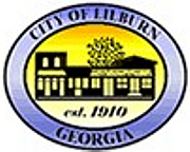3/11/2009
Georgia: Red Light Cameras Struggle in Face of Longer YellowLilburn, Georgia suspends red light camera program after extended yellow time cut violations by 80 percent.

On January 1, a new Georgia law kicked in forcing a one-second increase in the duration of the yellow warning light at intersections with red light cameras. The result has been devastating for red light camera makers as violations -- and revenue -- immediately plunged for the months of January, February and March. Last week, the city of Norcross dumped photo enforcement. Now the UK-owned red light camera maker Lasercraft is offering its customers a 90-day suspension of service to prevent cities from dropping their automated ticketing contracts. The cities of Lilburn and Snellville accepted this offer yesterday and suspended their red light camera programs.
"With the passage of House Bill 77, effective January 1, 2009, there has been a precipitous decline in the number of citations issued through the program," Lilburn Police Chief J.B. Davidson wrote in a memo to the city council.
The mandated increase in signal time created dramatic and instant results. In 2008, Lasercraft issued an average of 1,559 citations each month. In January, that number dropped 80 percent to just 313. Norcross also saw an 80 percent drop in violations. According to a 2001 report by the Office of the U.S. House Majority Leader, the findings in Lilburn and Norcross are not coincidental. The report argued that changes in national signal timing guidelines systematically reduced the amount of warning time available to motorists. It argued further that those with a financial incentive in using enforcement to deal with the additional violations created may have played a role in the changes (view report).
"This strongly suggests that inadequate yellow time is the major cause of red-light entries," the Congressional report stated. "If the vast majority of red light entries occur in the first second after the yellow light expires, it is reasonable to assume an additional second of yellow time on that light will yield a nearly 80 percent decrease in red light entries."
To date, Lilburn's three red light camera intersections have issued 57,528 tickets worth $4,026,960. Thanks to the longer yellow, however, monthly income from the program dropped $80,000 forcing Lasercraft to pause to discover what more might be done.
"The program vendor has proposed a plan to suspend the program for a ninety-day period, and the vendor will waive all Lasercraft charges during the suspension period," Davidson wrote.
Lilburn voted to accept the suspension to give Lasercraft time to come up with a plan to increase the number of citations. In a letter to Davidson, Lasercraft officials hinted that deactivating some cameras and presumably moving them to higher volume intersections could be part of the solution.
"In ninety days, on or before June 7th, the city and Lasercraft will meet to review the most current citation counts and make a decision as to reactivation of approaches, continuation of the suspension period, or de-commission of the program," Lasercraft Regional Director Ty Sellers wrote.
Lasercraft's letter also implied that violations may increase as drivers adapt to the longer yellow. This has not proved true in places such as Fairfax County, Virginia where the benefit of an increased yellow time appeared permanent. A 1985 report by the Institute of Transportation Engineers summarized the best opinion of experts as confirming the permanence of the benefit view report in PDF, see page 8).
"Research has consistently shown that drivers do not, in fact, adapt to the length of the yellow," the ITE report stated.
Although it is too early to draw any conclusions, accident data for January and February appear positive for the intersections with longer yellow. A copy of the Lasercraft letter and the police chief's memo to city council are available in a 325k PDF file at the source link below.


